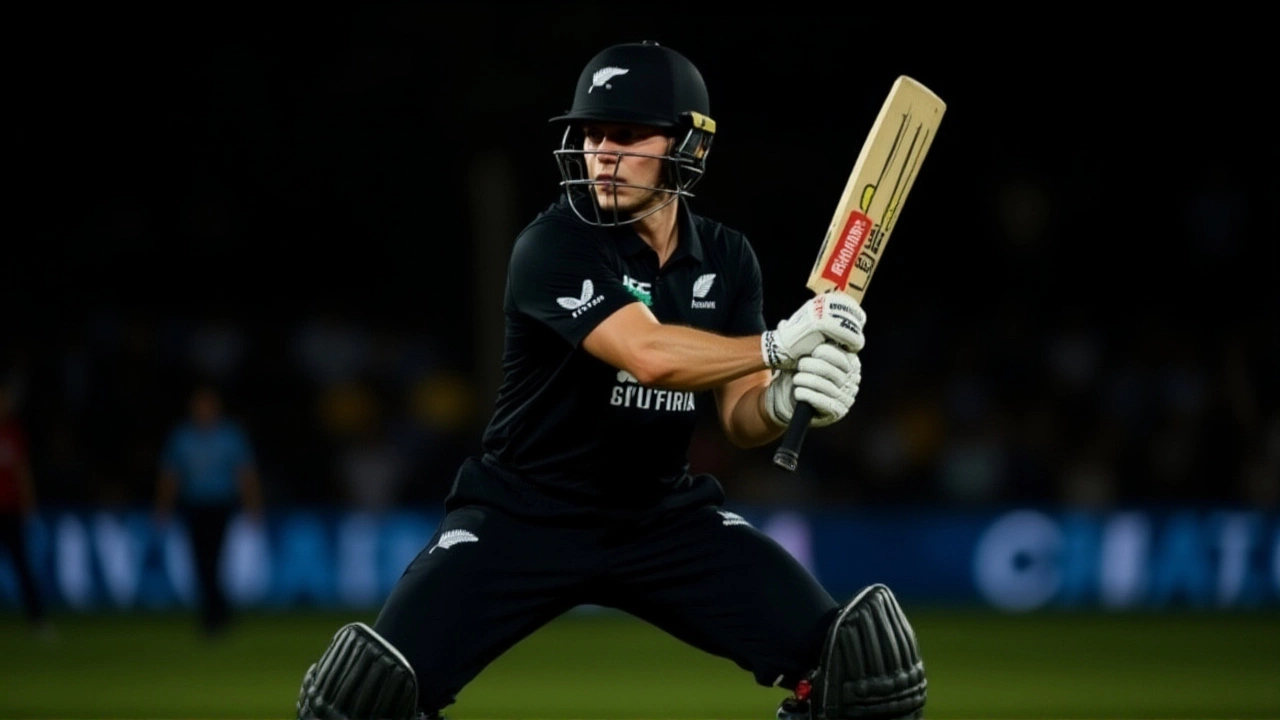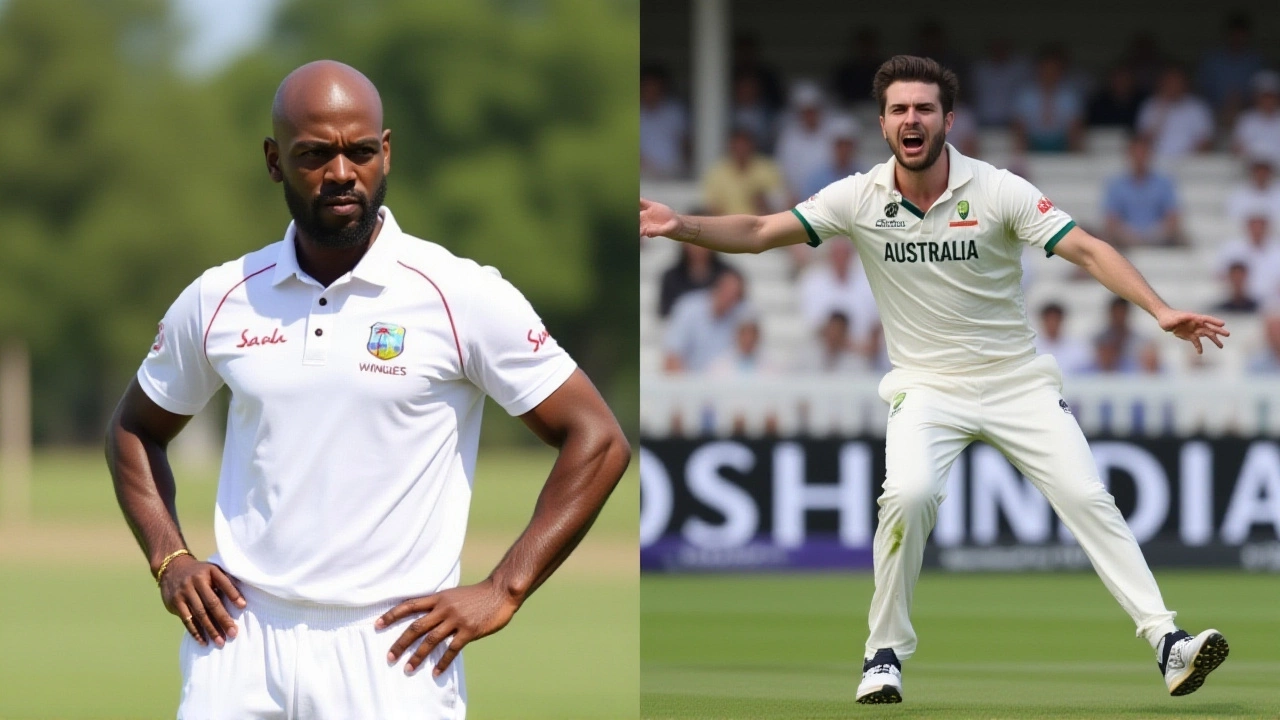On March 7, 2025, the second day of the 2nd Test of the Frank Worrell Trophy ended in dramatic fashion, with the West Indies reeling at 135/9 in their second innings — just nine runs away from an innings defeat. Australia, who won the toss and batted first, posted 286, then followed up with 243, setting a target that now feels like a mountain. With only one wicket left, the West Indies are clinging to survival, and the West Indies crowd is holding its breath. The twist? It’s not the batting that’s failing them — it’s the collapse under pressure.
Australia’s Steady Build, Then the Surge
Australia’s first innings wasn’t flashy, but it was methodical. Alex Carey (63 off 81) and Beau Webster (60 off 115) anchored the middle order after early losses. By the time Steven Smith walked in for the second innings, the pressure was mounting — and he delivered. His 71 off 119 balls wasn’t just about runs; it was about control. He outlasted the West Indian attack when others crumbled. Cameron Green added 52, but the real story was the collapse: Australia lost five wickets for just 63 runs between 47 and 110. That’s the kind of instability that makes Test cricket unpredictable — even when you’re ahead.
West Indies’ First Innings: A Glimmer of Hope
For a while, it looked like the West Indies might steal the initiative. Brandon King played the innings of his life — 75 off 108 balls, his first Test half-century and the only one by a West Indian in this series. Commentary noted his deliberate, white-ball style, a refreshing contrast to the traditional aggression. John Campbell (40 off 52) gave him support, but once King fell at 33, the innings unraveled. Nathan Lyon and Josh Hazlewood exploited the cracks, with Lyon taking 3 for 75 and Hazlewood 2 for 43. The West Indies were all out for 253 — a lead of just 33 runs. A decent start, but not enough.
The Bowlers Who Broke the Back
Then came the second innings — and the West Indies batting order turned to dust. Shamar Joseph, the 22-year-old fast bowler, was the architect of Australia’s second innings collapse. His 4 for 66 in 16 overs included the key wickets of Smith and Green, and his raw pace rattled the Australians. But the real killer was Australia’s response. Mitchell Starc returned in the second innings with 3 for 24 in just eight overs — a spell that included three clean bowled victims. The West Indies were never in the game after the 10th over. By the time Shai Hope (17) and Justin Greaves (2) fell in quick succession, the writing was on the wall.

At the Close: One Wicket, Nine Runs
When stumps were drawn, Anderson Phillip stood on 11 not out, facing the last ball of the day. His partner, Jayden Seales, hadn’t faced a ball. The scoreboard read 135/9. Nine runs to avoid the innings defeat. That’s not a chase — it’s a survival mission. The West Indies have lost their last eight wickets for 104 runs. They’ve been outbowled, outthought, and outmuscled. The Frank Worrell Trophy, named after the legendary West Indian captain who helped restore dignity to the game in the 1960s, now feels like a cautionary tale.
What’s at Stake Beyond the Scoreboard
This isn’t just about avoiding defeat. It’s about legacy. The West Indies haven’t won a Test series in Australia since 2001. They haven’t beaten Australia in a home Test since 2019. This match, in an unnamed stadium in the Caribbean, could define a generation. The younger players — Phillip, Seales, Joseph — are showing grit, but they’re up against a veteran Australian side that knows how to close out games. Pat Cummins, Australia’s captain, bowled 8 overs for 26 runs and one wicket on Day 2. He didn’t need to be flashy. He just needed to be relentless.
Historically, the Frank Worrell Trophy has been a symbol of mutual respect between two proud cricketing nations. But in 2025, it’s become a battleground of endurance. Australia’s discipline contrasts sharply with West Indies’ fragility under pressure. The West Indies have talent. But talent without temperament doesn’t win Tests.

What Happens Next?
Day 3 begins with a simple question: Can the last pair hold out for 20 minutes? If they do, the West Indies will bat again — and Australia will have to chase 144 to win. But if they fall short, Australia wins by an innings and 108 runs. That would be their biggest innings victory over the West Indies since 2005. And it would be the first time since 2015 that the West Indies have been bowled out for under 150 in a Test innings — twice.
For the West Indies, the next 24 hours aren’t about winning. They’re about proving they still belong in Test cricket. For Australia, it’s about continuing their dominance — and reminding the world why they’re still the benchmark.
Frequently Asked Questions
How close is West Indies to avoiding an innings defeat?
West Indies need just 9 more runs to avoid an innings defeat, with only one wicket remaining. They’re at 135/9 after 34.3 overs in their second innings, chasing Australia’s first-innings total of 286. If they fail to reach 144, Australia wins by an innings and 108 runs — their largest margin over the West Indies in over two decades.
Who were the standout performers in the match?
For Australia, Steven Smith (71) and Mitchell Starc (3/24) were crucial. For West Indies, Brandon King (75) offered resistance in the first innings, while Shamar Joseph (4/66) nearly pulled off a miracle with the ball. Nathan Lyon’s 3/42 and 3/75 made him the most consistent threat across both innings.
Why is this match significant in the Frank Worrell Trophy series?
The Frank Worrell Trophy, first contested in 1960–61, symbolizes the historic rivalry and mutual respect between Australia and the West Indies. This match marks a turning point: Australia is dominating, while the West Indies struggle to maintain Test relevance. A loss here would be their fourth consecutive defeat in the series and their 11th in the last 13 Tests against Australia.
What’s the impact of West Indies’ batting collapse?
The West Indies have lost their last eight wickets for 104 runs in the second innings — a pattern seen in all four of their recent Test defeats. Their top order lacks consistency, and their middle order crumbles under pressure. Without a clear strategy or mental resilience, their future in Test cricket remains uncertain, especially against disciplined teams like Australia.
Could Australia win by an innings and 100+ runs?
Yes. If West Indies are bowled out for under 144, Australia wins by an innings and 108 runs — their biggest such margin against the West Indies since 2005. It would also be Australia’s first innings victory over them since 2019. The psychological blow would be immense, potentially shifting momentum in the series.
Is this a sign of West Indies’ decline in Test cricket?
It’s a symptom. The West Indies have lost 11 of their last 13 Tests against Australia since 2015. Their bowling lacks depth, and their batting lacks stability. While young players like Shamar Joseph and Anderson Phillip show promise, they’re not yet supported by a strong system. Without structural reform — coaching, domestic structure, player development — their Test cricket future remains in jeopardy.
